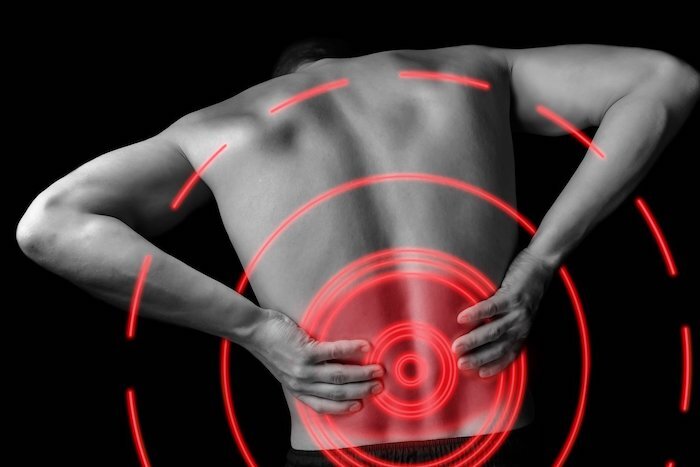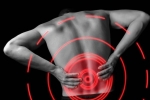
There are many underlying causes of a stiff back and knowing the shortlist of possible causes of your back stiffness will help you have a more productive discussion with your doctor.
Here are 4 common underlying causes of back stiffness with or without pain:
1. Tight Muscles in Your Thighs and Hips
Tightness in certain groups of muscles in your thighs and/or hips may alter the biomechanics of your spine. Common examples are:
Tight Hamstrings
Your hamstring muscles run through the back of each of your thighs. These large and powerful groups of muscles can become tight for a number of reasons, including physical inactivity or a lack of stretching before and/or after working out.
When your hamstrings are tight, they become shorter. These changes can affect the curvature of the lower part of your spine, disrupting the alignment of the spine with the pelvis (hip). As a result, you may feel stiffness in your lower back with or without pain. The stiffness is usually more pronounced when you bend your spine forward.
Targeted hamstring stretching can gradually lengthen your hamstrings and relieve lower back stiffness.
Tight Hip Flexors
The iliopsoas muscle in your hip allows you to lift your thigh and bring it close to your body. This action is called flexion of the hip.
Tightness in the iliopsoas muscle can create stiffness within the segments of your spine. In severe iliopsoas tightness, spinal instability may occur. It is also possible for the surrounding spinal tissues to get inflamed and irritated, generating pain.
Pressure on the spine can be relieved by stretches that help in lengthening the hip flexors.
2. Sitting with Your Spine Curved Forward
When you sit for a long time, the following changes occur in your spine:
- Increased pressure within each spinal segment
- Reduced strength in the muscles of your upper and lower back
- Decreased nutrient supply to the spinal tissues
When you sit on the edge of your chair or hunch towards your computer, the strain on your spine is more and can cause stiffness and pain.
A sedentary lifestyle can exacerbate these changes, causing spinal stiffness to develop within an hour of sitting.
To avoid back stiffness, use an upright sitting posture. Roll your shoulders back with the ears over the shoulders and the upper arms parallel to your torso. While sitting in an office chair try to avoid constant use of the backrest and seat upright to activate your core muscles.
3. Inflammatory Changes in Your Spine
Inflammation can cause the joints in your spine to become less flexible and/or fuse, resulting in stiffness. Two common examples are:
Ankylosing Spondylitis
When spinal inflammation results in the gradual fusion between adjacent vertebrae, it is called ankylosing spondylitis. The condition causes progressive stiffness and chronic pain in the upper and/or lower back.
The stiffness usually improves with exercise and does not improve with rest.
Osteoarthritis
Osteoarthritis is the breakdown of the protective cartilage between the facet joints at the back of your spine. As a result, your joints create more friction upon movement, causing pain and stiffness.
The stiffness is usually present in the morning, tends to ease with movements during the day, and peaks again after long periods of inactivity or rest.
Both ankylosing spondylitis and spinal osteoarthritis can be treated with medication, exercise, and lifestyle changes.
4. Dehydration and Shrinkage of Your Spinal Discs
Your spinal discs are shock-absorbing pads between your vertebrae that distribute loads within your spine. Age-related changes can cause degeneration in these discs, altering their biomechanics.
When a disc degenerates, there is a breakdown in its fibrocartilage component, loss of water, and a decrease in its height. These changes can cause spinal stiffness, especially during bending movements.
Treatment usually includes physical therapy, exercise, medications, and losing weight (if applicable). Rarely, surgery may be recommended.
If you experience back stiffness that does not resolve with self-care and/or affects your daily activities, talk to your doctor. A doctor can help identify the cause of your back stiffness and formulate a treatment plan for the underlying condition.
Precision Pain Care and Rehabilitation has two convenient locations in Richmond Hill – Queens and New Hyde Park – Long Island. Call the Richmond Hill office at (718) 215-1888, or (516) 419-4480 for the Long Island office, to arrange an appointment with our Interventional Pain Management Specialist, Dr. Jeffrey Chacko.













